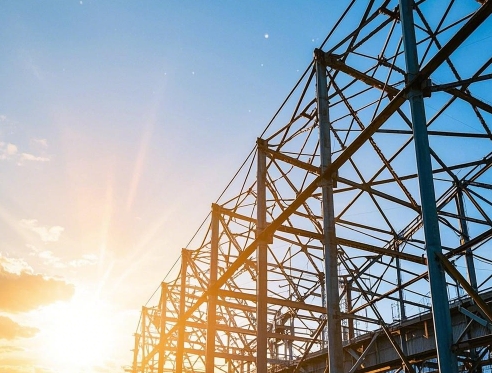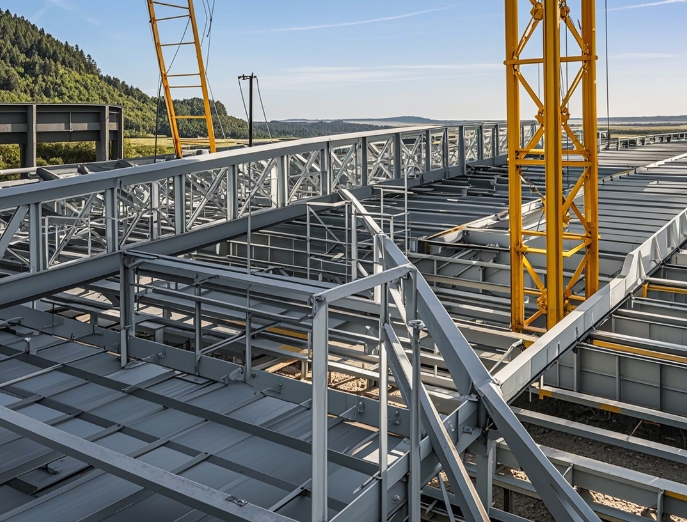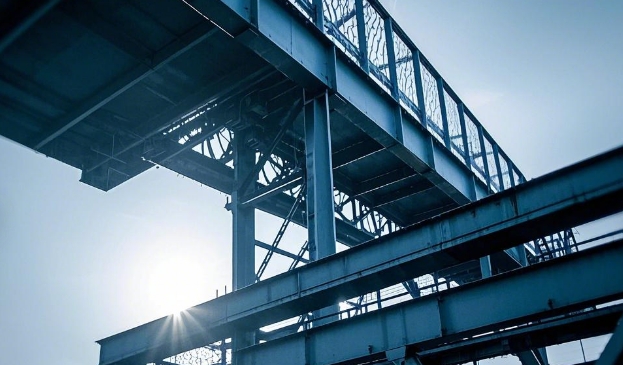What famous buildings are grid structures
更新时间:2020-12-18 14:37:08•点击:54124 • Industry Views
The National Stadium for the Beijing Olympics has a span of 333mx297m. The structure is a slightly curved flat grid structure. The main structure of the roof is an elliptical flat grid structure composed of two-way irregular oblique plane trusses. The grid shape is slightly curved. The curved hyperbolic paraboloid is formed by rotating a 24-door truss around the bowl-shaped stand inside the gymnasium. The roof is supported on 24 three-dimensional truss columns of unequal height with a column distance of 37.958m.

The National Aquatics Center, also known as the "Water Cube", is located in the Beijing Olympic Park. It is the main swimming pool built by Beijing for the 2008 Summer Olympics and one of the landmark buildings of the 2008 Beijing Olympics. The project covers an area of 62828m², a construction area of 79532 m2 during the competition, a building cornice height of 31m, a base area of 177m×177m, and 17,000 standard seats (including 13,000 temporary seats and 4000 permanent seats). The design service life of the main structure of this project is 100 years. The building envelope of the "Water Cube" adopts a new type of environmentally friendly and energy-saving ETFE (tetrafluoroethylene) membrane material, composed of more than 3000 air pillows, covering an area of 100,000 m2. These air pillows vary in size and shape, the largest one is about 9 m² and the smallest one is less than 1 m². The wall and the roof are divided into 3 layers inside and outside. Among 9,803 spherical nodes and 20870 steel rods, none of the parts are completely parallel in spatial positioning. The biggest design feature of the "Water Cube" is the addition of bubbles and free structures in the building, which makes the extreme simplicity of the form and the extreme richness of expression more and more complement each other, reflecting the fit between Eastern thought and modernity. The "Water Cube" membrane structure consisting of more than 3,000 air pillows and covering an area of 110,000 square meters is the world's largest membrane structure project and the only large-scale public building that is completely enclosed by a membrane structure.
The Japan Pavilion at the Shanghai World Expo has a long and irregular shape. The longest distance between the two ends is about 115.5 meters, and the maximum width is about 60 meters. The base area is 6448 square meters. The main body of the pavilion is 2 floors above ground and 3 partial floors. The entire building is covered by a dome. The dome structure is independent of each floor structure. The dome adopts a steel space grid structure. The outer surface decoration material is a double-layer ETFE inner inflatable membrane. Inside the dome is the main exhibition space, multifunctional theater and auxiliary space, and underground is the geothermal overhead floor, rainwater storage tank and pump room. The external structural enclosure system is divided into a main reticulated shell and a small reticulated shell, both of which are single-layer steel reticulated shells covered with ETFE film. The main reticulated shell is 94.5 meters long, 51.9 meters wide, and 23.85 meters high. It is supported by 6 heterogeneous steel reticulated shell columns. The small net shell is an elliptical net shell 27 meters long, 20 meters wide and 11.5 meters high. The internal structural system adopts a steel frame structure with support, the main body has two floors above the ground, partly three and four floors, and a basement. The total height of the frame structure is 19.5 meters. The floor roof adopts a profiled steel plate combined floor system, and the upper part of the stage adopts a steel truss structure. The fire protection of steel structure adopts ultra-thin paint, and the fire resistance grade is one.
The Singapore Sports Complex uses two pairs of curved ridge trusses and four triangular reticulated shells to form a roof with a herringbone profile. The plan of the pavilion is a rhombus 200m×100m. Supported on the periphery of 58 steel beams and two pairs of inner beams. The total covered building area is 13750m², and the steel index is 86kg/m². It was completed in 990. The reticulated shell is assembled on the ground and at low altitude, and three hinge lines are set to lift it in place with jacks. In the installation phase. The upper and lower ends of the side pillars between each part of the roof are hinged. It will be fixed after the construction is completed. This so-called Pantadome construction method developed by Japanese spatial structure expert Kawaguchi was used in the construction of the reticulated dome of the main stadium of the Barcelona Olympic Games (plan size 106m×128m).
The bai Greater Calgary Stadium in Canada, built in 1983, adopts a zhi hyperbolic parabolic cable dao net roof. Its circular zhuan-shaped plane has a diameter of 135m. It was built for the 1988 Winter Olympics. It has an extremely beautiful appearance and is still the world. The largest cable net structure on the world. Since the 1970s, due to the improvement of fabric materials used in the structure, membrane structures or cable-membrane structures (membrane structures reinforced with cables) have been developed. The United States has built many large-scale air-supported cable-membrane structures; Tokyo in 1988 The completed "Korakuen" baseball stadium also uses this structure technology, which is particularly advanced. Its approximate circular plane diameter is 204m; the "Georgia Dome" (Geogia Dome, built in 1992) built by Atlanta, USA for the 1996 Olympic Games uses novel The overall tensioned cable-membrane structure has a quasi-elliptical plane outline size of 192mX241m. Many magnificent and distinctive long-span buildings have become local symbolic signs and famous cultural landscapes.
Recommended Reading
-
Full analysis of seismic design and maintenance of grid structure
2025-02-27 16:16:52•196219 次
-
What are the key process points to follow in order to ensure the quality of grid processing?
2025-02-27 11:21:00•58366 次
-
What type of construction is the grid mainly suitable for?
2025-02-25 16:42:00•66804 次
-
Quality control requirements of grid manufacturers!
2025-02-25 16:02:44•103913 次






